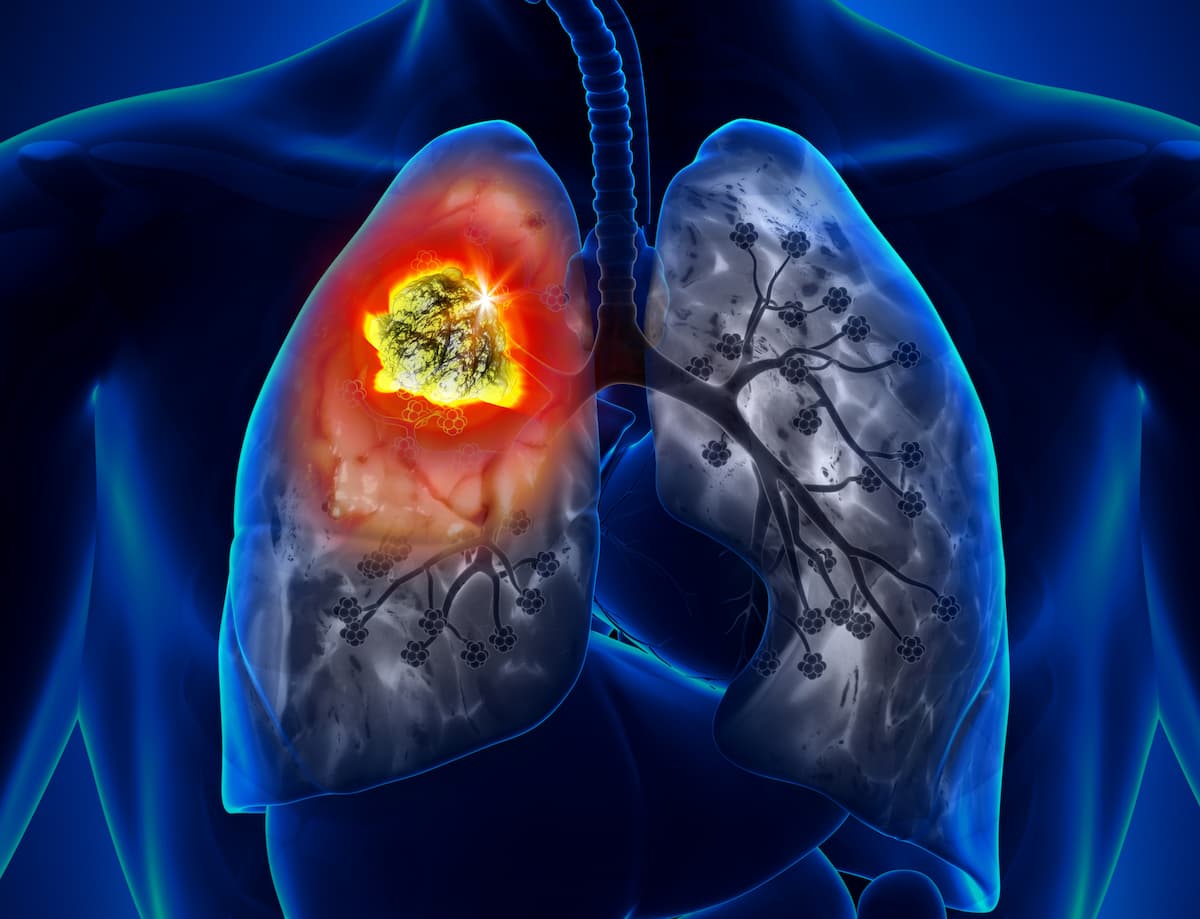FDA ODAC Votes Against Sotorasib PFS Data for KRAS G12C-Mutated NSCLC
Members of the committee reviewed findings from the phase 3 CodeBreaK200 trial, assessing the benefit of sotorasib in KRAS G12C–mutant non–small cell lung cancer.
"The question before the committee today was not one of the efficacy of sotorasib in lung cancer, but more specifically the ability to interpret data from a relatively small clinical trial conducted with a highly anticipated agent in a hyper-information age where both patients and providers had high expectations," according to ODAC meeting chair Ravi A. Madan, MD.

The FDA’s Oncologic Advisory Drug Committee cast a 10 to 2 vote, indicating that progression-free survival (PFS) data from the phase 3 CodeBreaK200 study (NCT04303780)—assessing sotorasib (Lumakras) for patients with KRAS G12C–mutated locally advanced or metastatic non–small cell lung cancer—could not be reliably interpreted.1
The meeting was convened to discuss a supplemental new drug application for sotorasib tablets for patients with KRAS G12C–positive disease as determined by an FDA approved test, and who have had 1 previous line of therapy. The panel of experts reviewed whether results from the phase 3 CodeBreaK200 trial (NCT04303780) would allow for the conversion of the supplemental new drug application to full approval.
The committee was asked to vote on the following question: “Can the primary endpoint, [PFS] per blinded independent central review [BICR], be reliably interpreted in CodeBreaK200?”
In May 2021, sotorasib was given accelerated approval by the FDA based on results from the phase 1/2 CodeBreaK100 trial (NCT03600883).2 In conjunction, the QIAGEN therascreen® KRAS RGQ PCR kit for tissue testing and the Guardant360® CDx for plasma testing were also approved as companion diagnostics.
“The question before the committee today was not one of the efficacy of sotorasib in lung cancer, but more specifically the ability to interpret data from a relatively small clinical trial conducted with a highly anticipated agent in a hyper-information age where both patients and providers had high expectations,” ODAC meeting chair Ravi A. Madan, MD, senior clinician of the Genitourinary Malignancies Branch and head of the Prostate Cancer Clinical Research Section at the National Institute of Health, explained. “Given that we had hours of statistical permutations discussed, that could change interpretations, I had to vote no on the reliability of the PFS benefit from this study.”
“The factors that contribute to the lack of certainty come from the small [population], investigator conduct, and the small 5-week PFS benefit,” he continued.
Results from CodeBreaK200 read out In June 2023 at the 2023 American Society of Clinical Oncology (ASCO) Annual Meeting.3 A total of 345 patients were enrolled in this trial, with an ECOG performance status of 0 or 1, but no presence of brain metastases. Patients were randomly assigned 1:1 to receive either 960 mg of oral sotorasib daily (n = 171) or intravenous docetaxel at 75 mg/m2 every 3 weeks (n = 174).
The primary end point is progression-free survival (PFS) by BICR via RECIST v1.1 in the intent-to-treat population. Secondary end points included overall survival (OS), overall response rate (ORR), duration of response, and disease control rate.
When looking between the sotorasib and docetaxel arms, respectively, additional gene alterations were detected, including TP53 (54% vs 60%), STK11 (37% vs 39%), and KEAP1 (28% vs 23%). Of note, 17% of patients had both STK11 and KEAP1 mutations.
The median follow-up was 17.7 months, and patients receiving sotorasib had a 34% risk of disease progression or death compared with docetaxel (HR, 0.66; 95% CI, 0.51-0.86; P = .0017). The median PFS was 5.6 months (95% CI, 4.3-7.8) in the sotorasib arm vs 4.5 months (95% CI, 3.0-5.7) in the docetaxel arm. At 12-months, the PFS rate was 24.8% in the sotorasib arm vs 10.1% in the docetaxel arm.
PFS was maintained across all co-alteration groups including STK11-altered (HR, 0.68; 95% CI, 0.45-1.05) and wild-type (HR, 0.65; 95% CI, 0.46-0.92) disease, those with KEAP1-altered (HR, 0.84; 95% CI, 0.48-1.47) and wild-type (HR, 0.62; 95% CI, 0.45-0.84) disease, and those with TP53-altered (HR, 0.83; 95% CI, 0.58-1.18) and wild-type (HR, 0.48; 95% CI, 0.30-0.75) disease.
PD-L1 expression was also observed, and those patients who had it had improved PFS as well. In patients who had a PD-L1 expression of less than 1%, those in the sotorasib arm (n = 57) had a median PFS of 8.3 months (95% CI, 4.1-8.6) vs 5.9 months (95% CI, 3.5-7.2) with docetaxel (n = 55; HR, 0.66; 95% CI, 0.41-1.06; P = .06). In those with a PD-L1 expression 1% or higher but less than 50%, the median PFS with was 4.6 months (95% CI, 3.4-7.8) and 3.0 months (95% CI, 2.1-4.5), in the sotorasib (n = 46) and docetaxel (n = 70) arms, respectively (HR, 0.61; 95% CI, 0.39-0.96; P = .03). In those with a PD-L1 expression of at least 50%, the median PFS with sotorasib (n = 60) was 5.7 months (95% CI, 4.0-10.0) vs 5.4 months (95% CI, 2.0-10.2) with docetaxel (n = 40; HR, 0.75; 95% CI, 0.44-1.23; P = .14).
The ORR by BICR in the sotorasib arm was 28.1% (95% CI, 21.5%-35.4%) vs 13.2% (95% CI, 8.6%-19.2%) with docetaxel (P <.001). In the sotorasib arm, the disease control rate was 82.5% (95% CI, 75.9%-87.8%) compared with 60.3% (95% CI, 52.7%-67.7%) in the docetaxel arm. Additionally, the OS was 10.6 months (95% CI, 8.9-14.0) vs 11.3 months (95% CI, 9.0-14.9) between the sotorasib and docetaxel arms, respectively (HR, 1.01; 95% CI, 0.77-1.33).
References
- Oncologic Drugs Advisory Committee (ODAC) Meeting. Streamed live October 5, 2023. Accessed October 5, 2023. https://bit.ly/3PMMRt9
- FDA grants accelerated approval to sotorasib for KRAS G12C mutated NSCLC. News release. FDA. May 28, 2021. Accessed October 5, 2023. https://bit.ly/46A08vV
- Skoulidis F, De Langen A, Paz-Ares LG, et al. Biomarker subgroup analyses of CodeBreaK 200, a phase 3 trial of sotorasib versus (vs) docetaxel in patients (pts) with pretreated KRAS G12C-mutated advanced non-small cell lung cancer (NSCLC). J Clin Oncol. 2023;41(suppl 16):9008. doi:10.1200/JCO.2023.41.16_suppl.9008